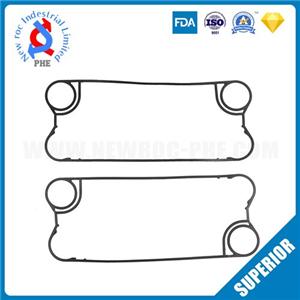What is a "plate heat exchanger gasket"?
Sealing gaskets are placed around the detachable plate heat exchanger plates, which not only play a sealing role, but also form a certain gap between the heat exchanger plates and the heat exchanger plates, thereby forming a fluid channel. It is a plate heat exchanger Very important part in the middle. The temperature that the heat exchanger gasket can withstand is essentially the working temperature of the plate heat exchanger, and the working pressure of the plate heat exchanger is also restricted by the gasket.
The upper and lower main sealing surfaces of the heat exchanger gasket should be flat and smooth, and there should be no impurities, bubbles, pits, flashing and other defects that affect the sealing. The cross section of the heat exchanger gasket should be uniform in color, and there should be no mechanical impurities, Defects such as bubbles.
The thickness of the gasket of the plate heat exchanger should not have a negative deviation.
Plate heat exchanger gaskets should be stored in a cool, dry, and dark environment. The ambient temperature should not exceed 40°C, and should not be in contact with acids, alkalis, oils and organic solvents, and avoid heavy pressure.
The material of the sealing rubber gasket generally includes EPDM, NBR, FKM, etc., each rubber has its own different temperature range and medium range.
The installation of heat exchanger gaskets on the heat exchanger plates mainly includes three types: direct pasting, inlaid and snap-fitting. The pasted structure is simple and the processing is relatively easy, but the installation and disassembly are relatively troublesome. Inlaid and snap-mounted gaskets have complex structures and are more troublesome to process, but they are relatively easy to install and disassemble.




